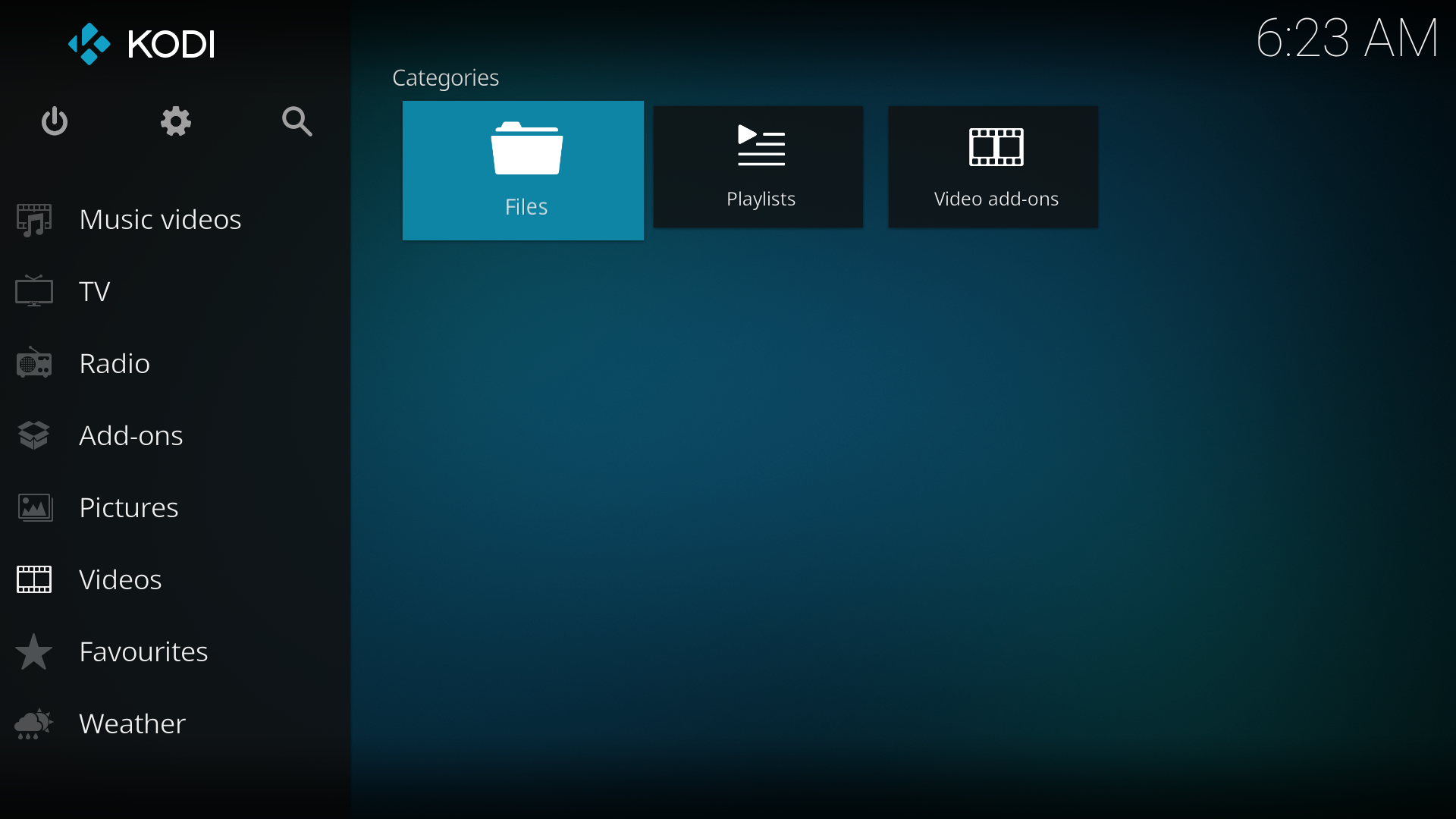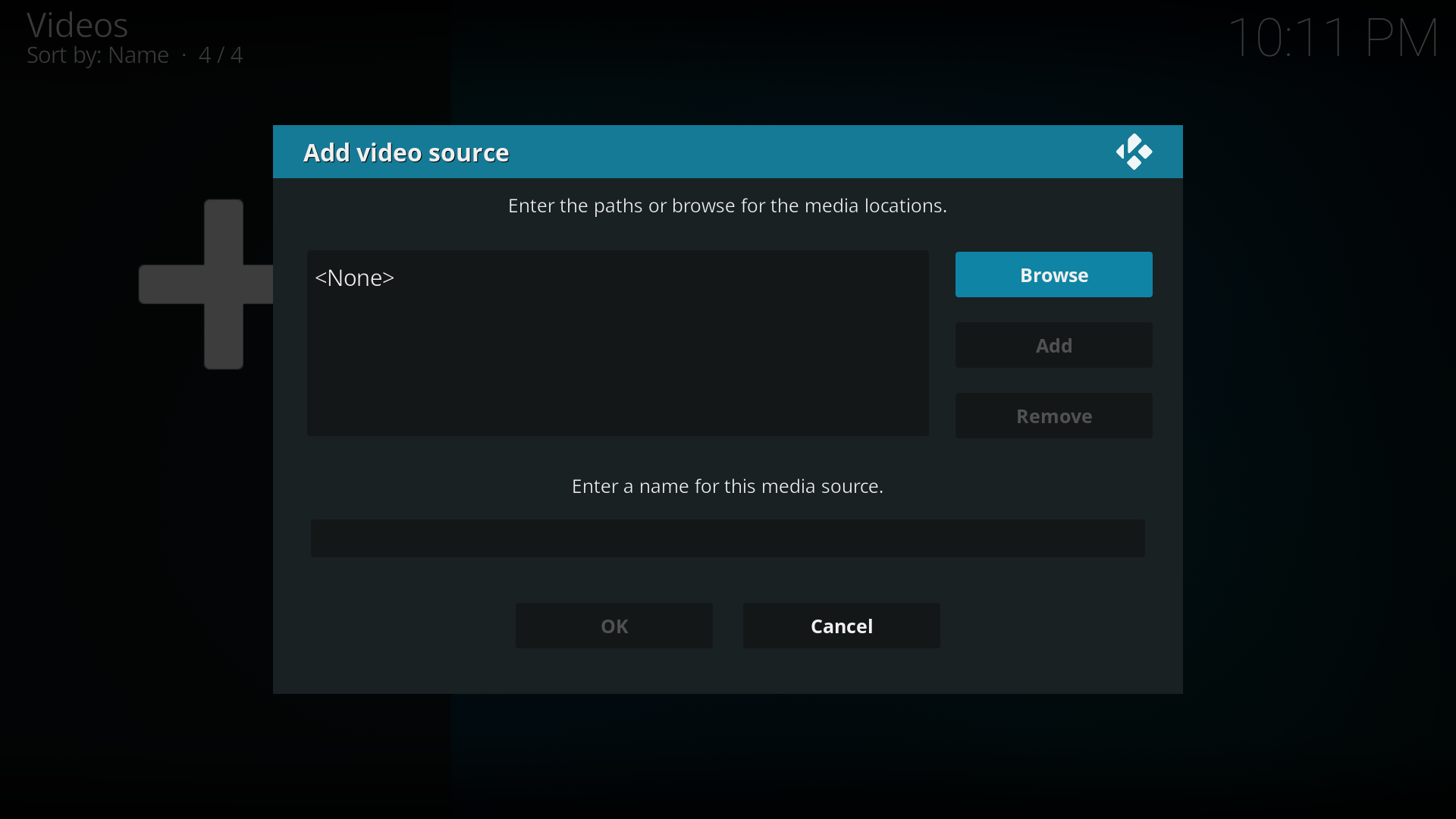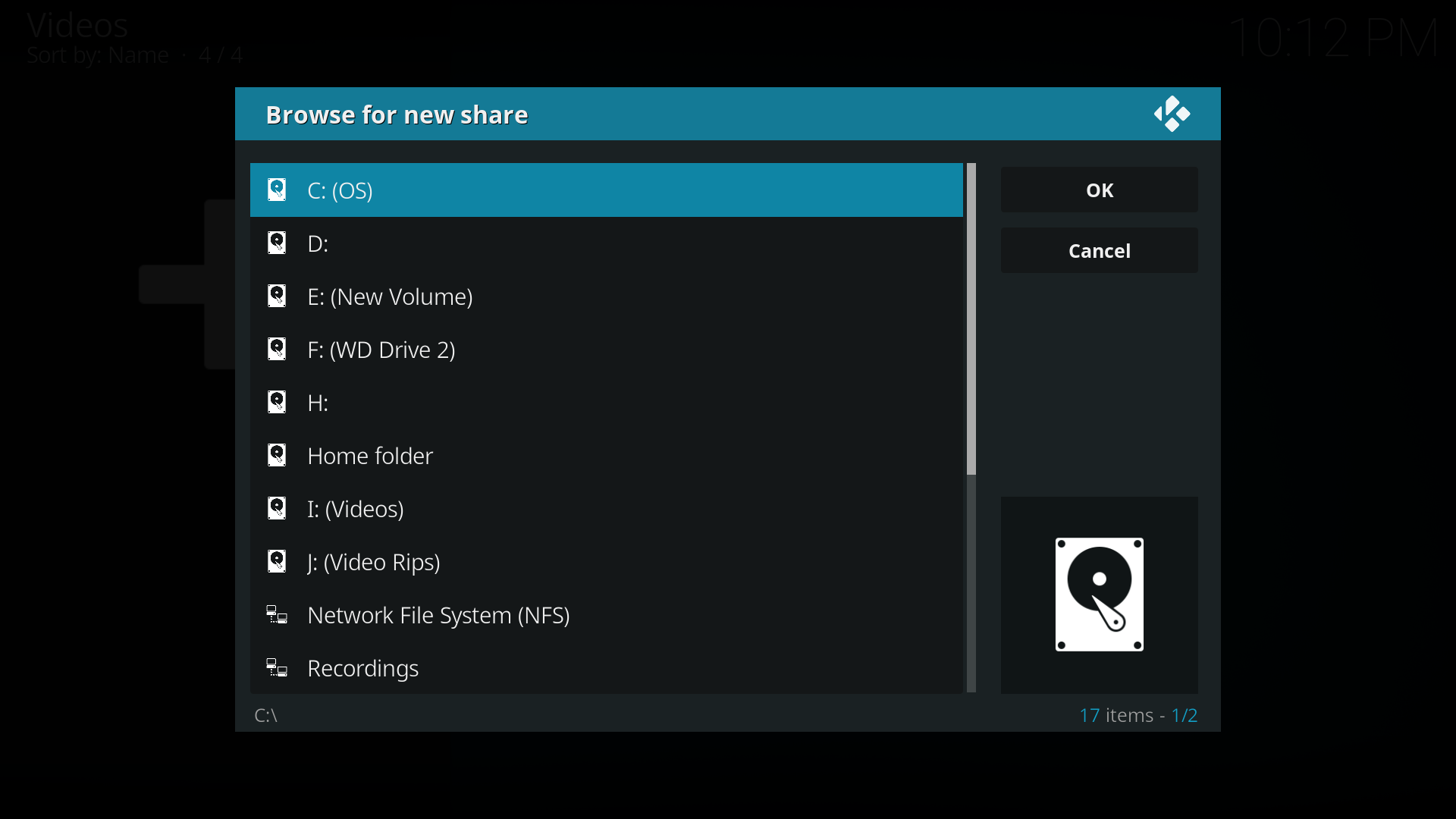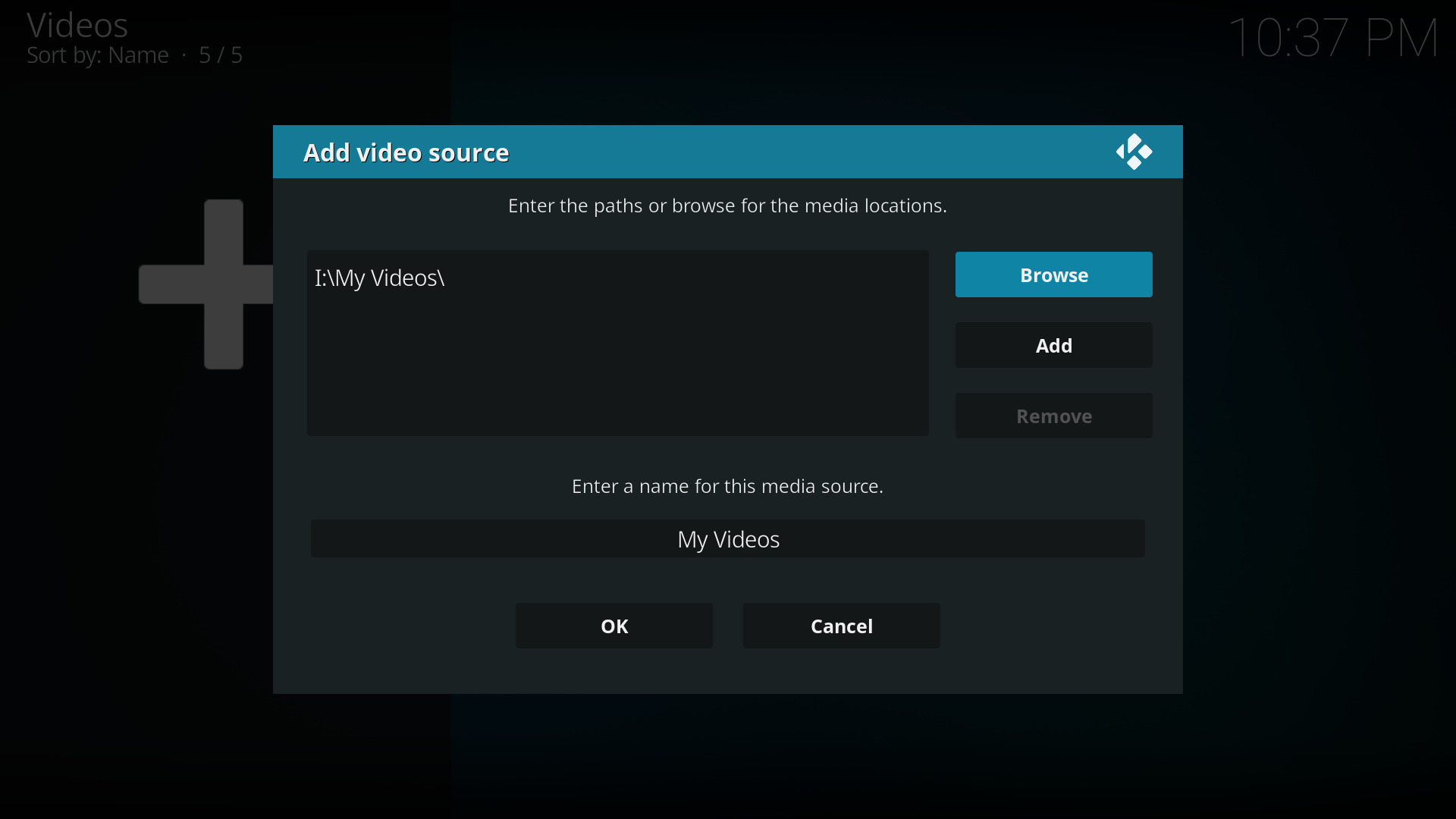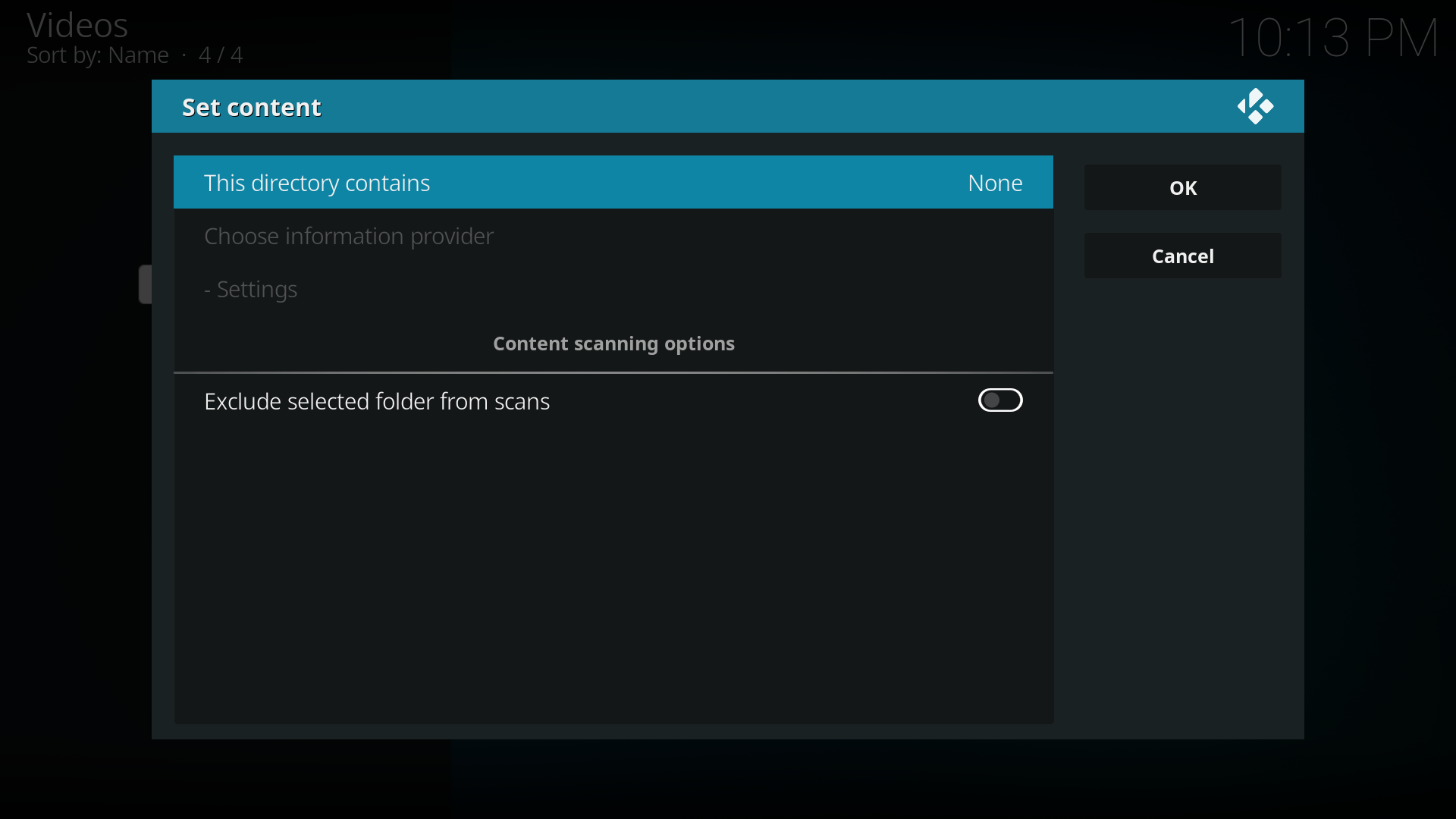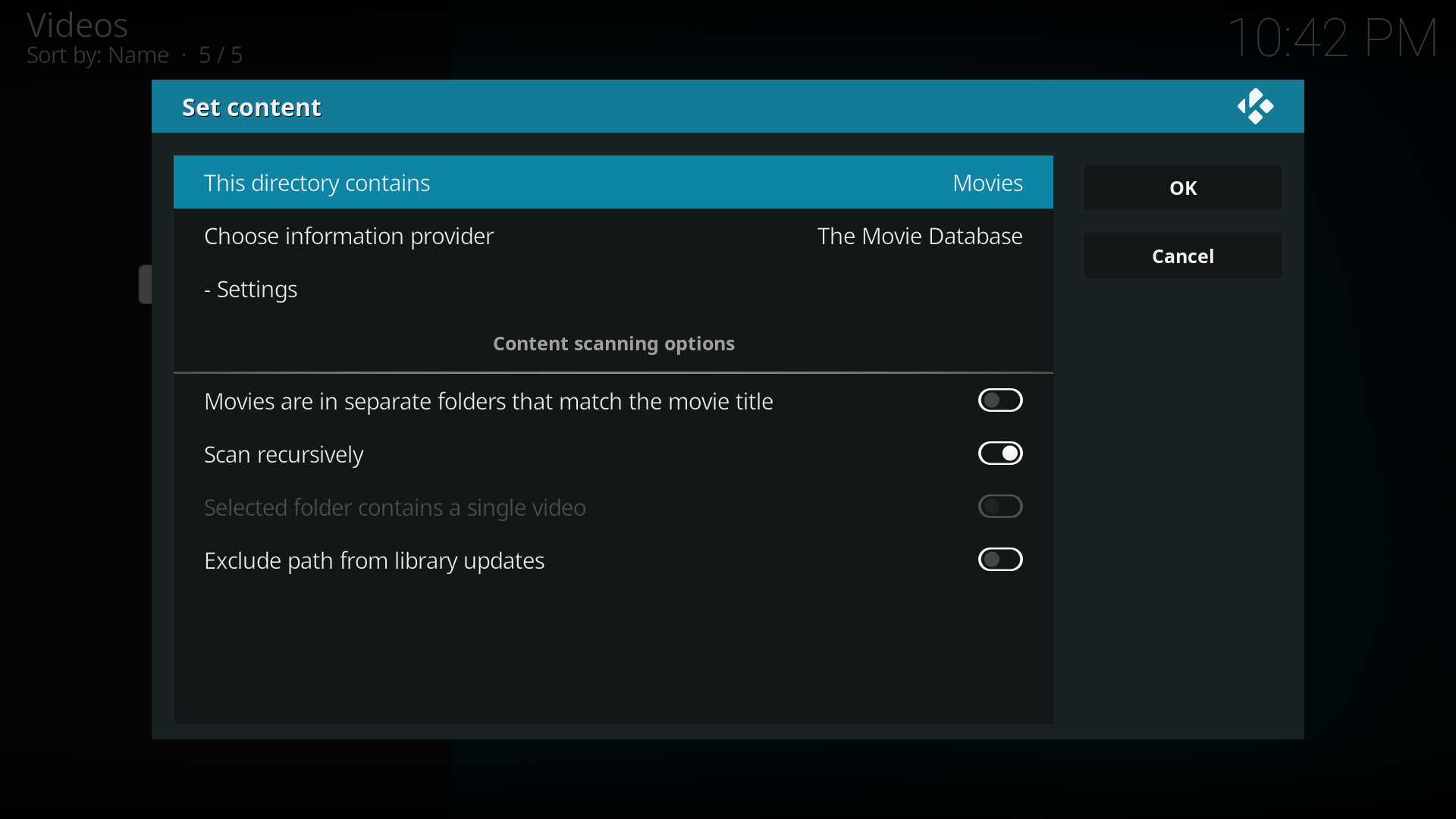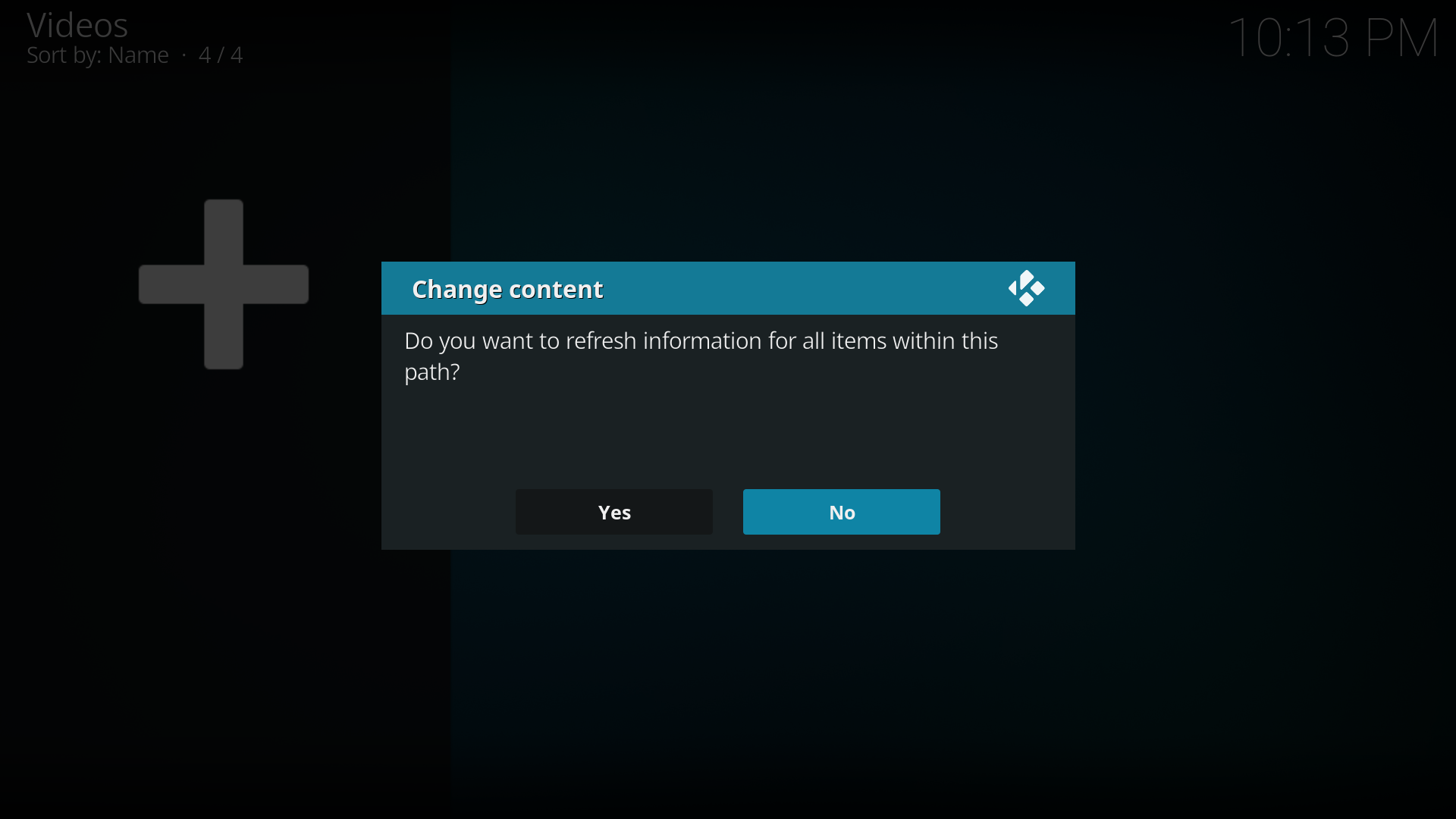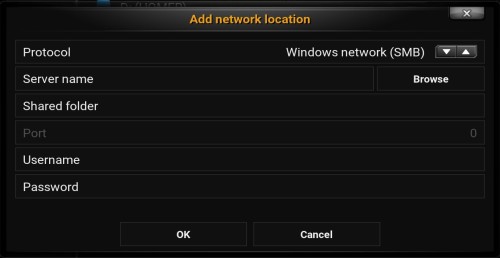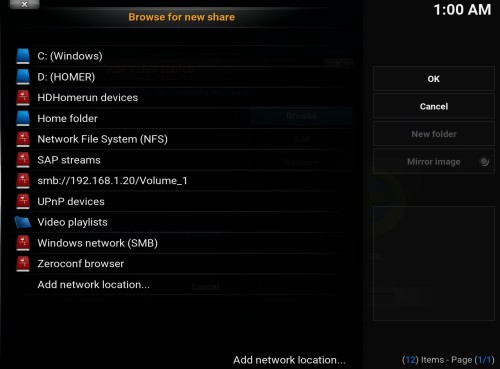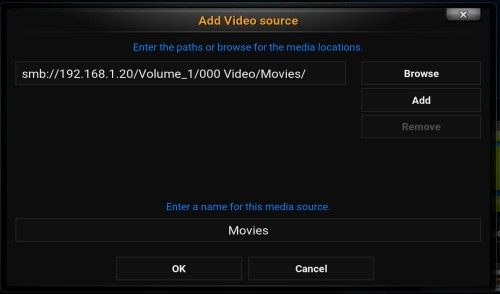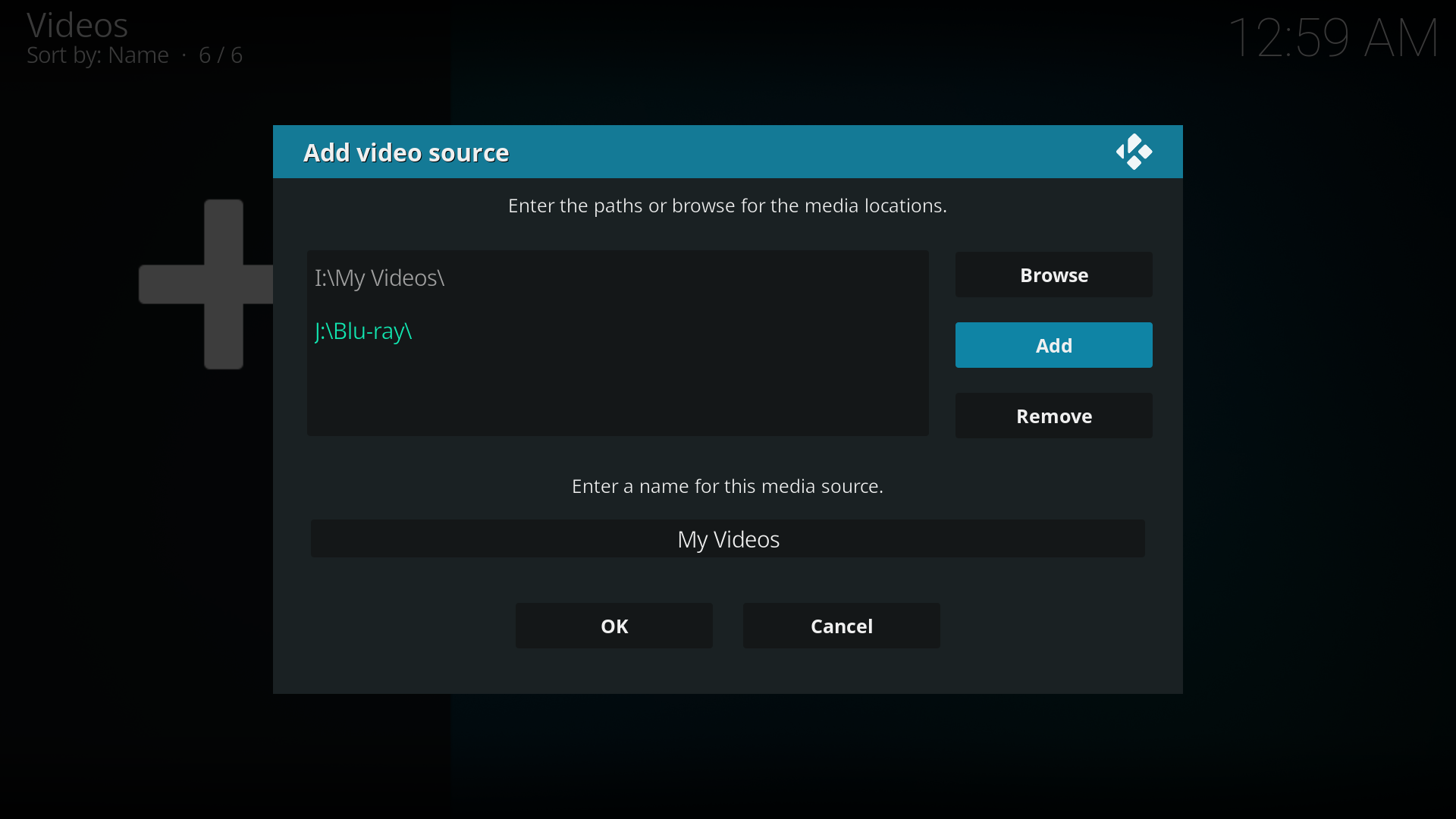Adding video sources: Difference between revisions
No edit summary |
No edit summary |
||
| Line 1: | Line 1: | ||
{{mininav|[[Video library]]|[[Video management|Management]]}} | {{mininav|[[Video library]]|[[Video management|Management]]}} | ||
<section begin="intro" />A video source is a kind of media source. [[Media sources]] are the links that tell | <section begin="intro" />A video source is a kind of media source. [[Media sources]] are the links that tell Kodi where your content is stored and what type of content is contained within each one. | ||
You can have multiple sources for each media type. <section end="intro" /> | You can have multiple sources for each media type. <section end="intro" /> | ||
You can use local media, file shares, removable USB drives, etc. '''[[UPnP]] won't work with the library features (scanning data in like summaries and movie covers) in | You can use local media, file shares, removable USB drives, etc. '''[[UPnP]] won't work with the library features (scanning data in like summaries and movie covers) in Kodi''', but just about all the other options should be fine. | ||
__TOC__ | __TOC__ | ||
| Line 15: | Line 15: | ||
File:Quick-start-3.png|'''Step 3:''' The "Add Video Source" screen will be displayed. Then select the "Browse" button. | File:Quick-start-3.png|'''Step 3:''' The "Add Video Source" screen will be displayed. Then select the "Browse" button. | ||
File:Quick-start-4.png|'''Step 4:''' Now browse to where you keep your videos stored. Once you have found the folder you keep your videos in, select the "OK" button. If you keep them shared on a network drive, read the [[Configuring PC Shares]] article for more information about setting up a share on your computer first. | File:Quick-start-4.png|'''Step 4:''' Now browse to where you keep your videos stored. Once you have found the folder you keep your videos in, select the "OK" button. If you keep them shared on a network drive, read the [[Configuring PC Shares]] article for more information about setting up a share on your computer first. | ||
File:Quick-start-5.png|'''Step 5:''' Name this Video Source however you like. If it is a movie folder, you will probably want to name it "Movies", and if it is a TV Show folder then you will probably want name it TV Shows. The name doesn't matter to | File:Quick-start-5.png|'''Step 5:''' Name this Video Source however you like. If it is a movie folder, you will probably want to name it "Movies", and if it is a TV Show folder then you will probably want name it TV Shows. The name doesn't matter to Kodi. Then select "OK". | ||
File:Quick-start-6.png|'''Step 6:''' The set content window will display, this is where you tell | File:Quick-start-6.png|'''Step 6:''' The set content window will display, this is where you tell Kodi what type of media is in the folder. Press the down arrow until you reach the correct type (in this example movies) | ||
File:Quick-start-7.png|'''Step 7:''' There are a number of options underneath, see '''[[Adding videos to the library/Setting content and scanning|Setting content and scanning]]''' to check what options to enable. Then select "OK" | File:Quick-start-7.png|'''Step 7:''' There are a number of options underneath, see '''[[Adding videos to the library/Setting content and scanning|Setting content and scanning]]''' to check what options to enable. Then select "OK" | ||
File:Quick-start-8.png|'''Step 8:''' Press Yes to scan the content to the library (if no is pressed, it can be scanned later). | File:Quick-start-8.png|'''Step 8:''' Press Yes to scan the content to the library (if no is pressed, it can be scanned later). | ||
| Line 48: | Line 48: | ||
[[File:Multi locations in one source.png|right|500px]] | [[File:Multi locations in one source.png|right|500px]] | ||
You might notice that | You might notice that Kodi has an "ADD" button in addition to a "BROWSE" button when you are adding a source. After you add your first location, you can add a second location (network or local. you can even mix them) and Kodi will show both folders as a single folder/source. | ||
Kodi will also combine the subfolders within the source/locations. For example, if you had a hard drive for TV shows, but ran out of space, you could make a second hard drive with the same folder paths and Kodi would merge them together to a single directory path. Such as | |||
:<code>Hard drive 1/TV shows/<br /> | :<code>Hard drive 1/TV shows/<br /> | ||
| Line 60: | Line 60: | ||
:Hard drive 2/TV shows/American Dad/</code> | :Hard drive 2/TV shows/American Dad/</code> | ||
You could have half of a show on one hard drive, half on another, and | You could have half of a show on one hard drive, half on another, and Kodi will show it to you as if it was in a single location by using multiple locations in a single source. | ||
{{note|This only impacts the basic "Files view". The default Library nodes will combine things by show even if their files are spread across multiple drives. '''Most users will not really benefit from using multiple paths in a single source.'''}} | {{note|This only impacts the basic "Files view". The default Library nodes will combine things by show even if their files are spread across multiple drives. '''Most users will not really benefit from using multiple paths in a single source.'''}} | ||
Revision as of 14:44, 8 December 2015
A video source is a kind of media source. Media sources are the links that tell Kodi where your content is stored and what type of content is contained within each one.
You can have multiple sources for each media type.
You can use local media, file shares, removable USB drives, etc. UPnP won't work with the library features (scanning data in like summaries and movie covers) in Kodi, but just about all the other options should be fine.
Adding sources
Step 4: Now browse to where you keep your videos stored. Once you have found the folder you keep your videos in, select the "OK" button. If you keep them shared on a network drive, read the Configuring PC Shares article for more information about setting up a share on your computer first.
Step 7: There are a number of options underneath, see Setting content and scanning to check what options to enable. Then select "OK"
Adding Remote sources
For details on the supported protocols and configuration
- See: File sharing
Follow the steps (above) for adding a source, but when you get to the 'browse' section (step 4), you need to do one of the following:
If your remote device is visible from one of the existing choices (e.g 'Network File system' , 'UPnP Devices' etc)
- Select a remote location, and you should be able to browse to the remote server.
If the device is not visible, or
- It is a remote NAS
- It is an SMB server
You will need to add a new network location:
Making one source from multiple locations
You might notice that Kodi has an "ADD" button in addition to a "BROWSE" button when you are adding a source. After you add your first location, you can add a second location (network or local. you can even mix them) and Kodi will show both folders as a single folder/source.
Kodi will also combine the subfolders within the source/locations. For example, if you had a hard drive for TV shows, but ran out of space, you could make a second hard drive with the same folder paths and Kodi would merge them together to a single directory path. Such as
Hard drive 1/TV shows/Hard drive 2/TV shows/
and the same is true for an additional nested folder with the same way:
Hard drive 1/TV shows/American Dad/Hard drive 2/TV shows/American Dad/
You could have half of a show on one hard drive, half on another, and Kodi will show it to you as if it was in a single location by using multiple locations in a single source.
Note: This only impacts the basic "Files view". The default Library nodes will combine things by show even if their files are spread across multiple drives. Most users will not really benefit from using multiple paths in a single source.

